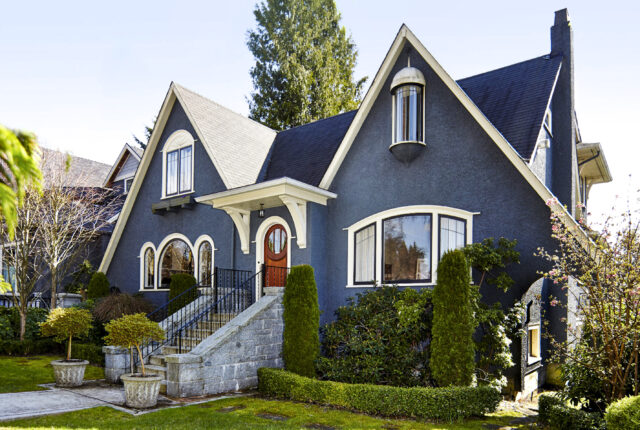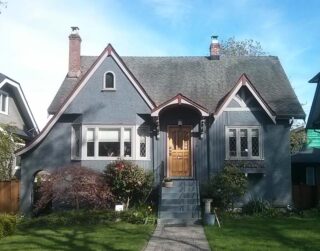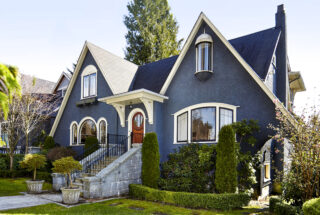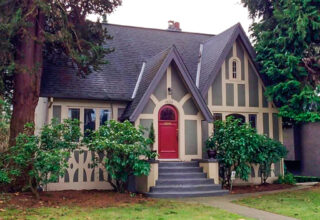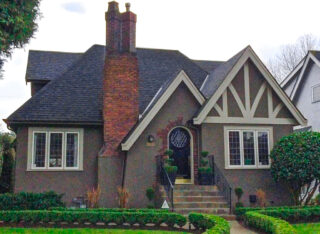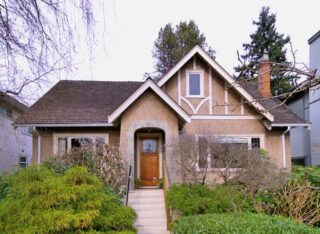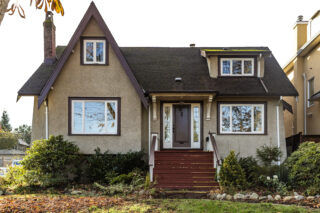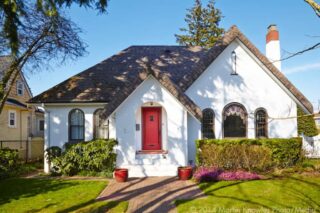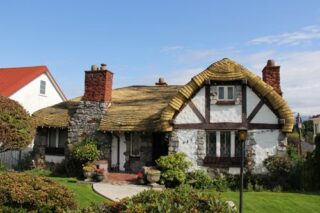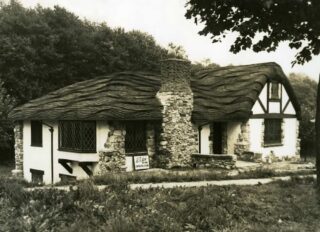The most common cladding form is stucco and decorative trim boards are often used to evoke medieval half-timbering. Brick is often employed decoratively as a plaster insert to give the appearance of aged walls as seen in medieval European towns. The original roofs were generally cedar shingles, sometimes elaborated in exaggerated overlapping wave patterns to mimic the appearance of traditional thatched roofs.
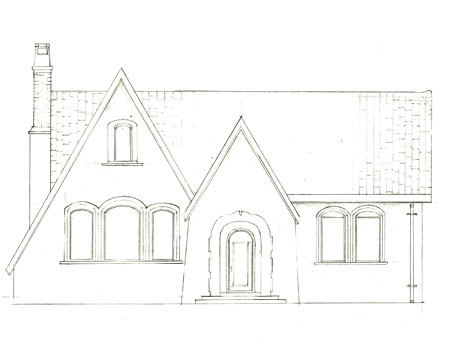
Click on the diagram or expand the term index to learn more about the features.
Gable Roof
A pitched roof that ends in a gable (the triangular portion of a wall defined by the sloping edges of the roof and a horizontal line between the eave line).
Mullion
A vertical post, frame, or double jamb dividing two window sashes or large panes of glass. Not to be confused with muntin.
Shingles
Placed in an overlapping fashion, shingles can be installed as cladding, or on a roof. Though traditionally wood, shingles may now be made from a wide range of synthetic materials. Types of shingles: Asphalt Fishscale Sawtooth Shakes
Stucco
A material – sometimes called render, made of an aggregate (sand) and a binder (Portland cement, and water). It is applied wet and hardens to a very dense solid. Sometimes used on interior walls, and ceilings (called California plaster), it is mainly used on exteriors and can cover less visually appealing construction materials such as concrete, cinder block, or clay brick.
Form
English Storybook is a fanciful, asymmetrical style with strongly vertical gabled bays and dormers projecting from a cross-gabled or hipped roof. The roofing may be rolled over the eaves to simulate thatching. The steep roofline sometimes descends almost to the ground and may be curved upwards toward the base to give a kind of flying buttress look – for example, providing a roof over a gateway into the back garden. Windows are often grouped in threes, sometimes with rounded tops, and set with leaded glass. There is rarely a porch and the front door is usually placed near the middle of the facade. Cladding is stucco. Some have flared false-buttresses descending to the ground at the corners to give the house a slightly triangular, taller form. The more picturesque versions are popularly known as “Hansel & Gretel” houses and evoke the romanticized English countryside seen, for example, in 19th century watercolours of rustic scenes.
Background
English Storybook is an interwar style inspired by English cottages. Soldiers returning from World War I brought back their encounters with European architecture. The English Storybook style is a close relative of the Tudor Revival. Like Tudor Revival, this style became especially popular during the 1920s and 1930s. People had more money to invest in new houses thanks to economic improvement after the end of the war. This led to an explosion of picturesque designs. Along with the Revival styles that were widely built, the construction of quaint cottage-like homes spread. These houses came to be called ‘storybook cottages.’ In the same period, the rise of Hollywood spread images of distant places and styles. This may also have contributed to the popularity of the Storybook style. Storybook cottages are sometimes called Cotswold Cottages, English Country Cottages, or Ann Hathaway Cottages.
Details
- Steep cross-gabled or hipped roof
- Sloping, uneven roof (‘Catslide’)
- Rarely have porch
- Picturesque profile
- Asymmetrical design
- Low doors and arched doors
- Strongly vertical gabled bays and dormers
- Usually stucco cladding
Learn about the similarities and differences with French Storybook
